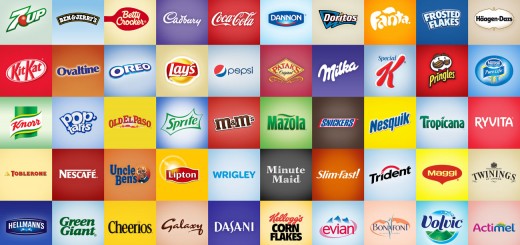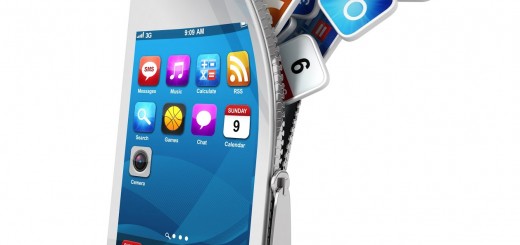Mobile Really Does Work, but Problems Remain: Q&A with Jules Minvielle, CEO, Numbate
Back in April, ATS Paris offered up some food for thought about the French mobile advertising market, which was quite a talking point throughout the day, no less than during the ‘mobile’ panel, where Mathieu Rostamkolei, vice president, Numbate was a participant. Three months down the line, ExchangeWire, keen to follow the progression of the market, speak to Jules Minvielle (pictured below), CEO, Numbate, about mobile advertising in France exploring trends, challenges and the future.
ExchangeWire: Mobile is experiencing huge growth globally – what does the market look like in France?
Jules Minvielle: While the French mobile market is still relatively young, compared to others (it represented 22% of total digital spend in France in 2015), and there are perhaps too many competitors for such a small market, it is clearly going to become much bigger. Total digital ad spend in France is expected to reach €3.42bn (£2.91bn) by 2019. It is estimated that mobile ad spend will make up around €1.98bn (£1.69bn) of that figure. Clearly, there will be huge opportunities for those who get the most from mobile formats.
Video is also experiencing exponential growth within mobile, admittedly at a smaller scale in the French market – what opportunities exist for mobile video in France?
Video is experiencing exponential growth. Right now, mobile video advertising is much more popular than video advertising on desktop. In terms of revenue, according to eMarketer, mobile advertising reached €67m (£57.1m) in France in 2015, but it is expected to reach €358m (£305.3m) in 2020 (54.1% of total digital video net ad revenues).
Obviously, mobile video inventory is still low. Mobile video outstreams are increasing, but advertisers need to get the format right. To be effective, mobile video ads need to be shorter than TV video ads. One way of improving results here is by running them as outstream ads in placements such as interstitial video. Vertical video is another format advertisers need to consider to get better results on mobile.
How is the French market evolving into programmatic trading on mobile, versus direct sales?
Programmatic spend in France is low compared to other countries such as the UK and the US. But there is no doubt that we will start to see something similar to what we’ve been seeing in the UK over the last year: agencies trading more and more on programmatic (including direct programmatic). When launching campaigns, it is very possible that some agencies will trade only on programmatic and there will be a slowdown in direct buying by the end of the year. In the UK, this is already happening: in 2016, some companies even stopped direct buying and decided to buy only programmatically.
How can the mobile industry overcome the challenges of connecting in-app and mobile web user data?

Jules Minvielle, CEO, Numbate
Connecting in-app and mobile web user data is a huge challenge for the industry. Users navigate between both environments when using their mobile devices, so advertisers need to try to do likewise. Unfortunately, to date, the technologies being employed to connect the data between the two environments are not 100% reliable. Most are based on probability. We need better technology; and it is really up to the likes of Apple and Google to show the way on this.
But this in itself is a problem, because, the major players, such as GAFA (Google, Apple, Facebook, and Amazon), have the ability to log user data across desktop, mobile, and in-app with accuracy. This, of course, gives them an unfair advantage, which they will be slow to give up to smaller firms.
How can the development of new ad formats help to optimise the user experience on mobile? Is the opportunity in native mobile advertising?
The user experience is the key to succeeding on mobile. But, because rates are too low and advertisers do not adapt desktop formats for mobile, publishers and networks have created formats that are unsuitable for users.
For example, advertisers often ask to run ‘16/9’ videos that are one minute long, or even more, that require the sound to be switched on in order for the message to be fully understood. But, more than 95% of users use their phones in portrait mode with the sound off.
This is why, when developing its mobile formats, Numbate is always looking to enhance the user experience, fully testing all formats before they are sent out on ‘real’ campaigns. Advertisers need to put more planning and creativity into their campaigns if they want to leverage the best results. Mobile offers an incredible range of features that can be used to do this. By integrating mobile tools, such as the accelerometer, camera, couponing, or geo-locations, it is possible to do much, much more. But, more often than not, the mobile creative execution is simply a poor replication of the TV, print, or desktop format.
Native advertising sounds like it should solve all the issues the industry faces, and it is a great opportunity to get advertising that works for users, publishers, and advertisers; but it is not the answer to everything. The price advertisers pay for ads on mobile does not compensate the loss in revenue for publishers who have fewer ads on a mobile page than they have on desktop. Until the industry is ready to pay higher rates for native advertising, interstitial formats will remain.
Despite huge user growth in mobile, ad spend is not at the same scale. What’s the story here? How can advertisers catch up to their consumers?
According to a 2016 study from Frenchweb, the click-through rate on mobile is better than it is on desktop: approximately 70% of clicks on display advertising happened on a smartphone from July 2015 to January 2016, compared to 30% on desktop (and less than 3% on tablet). However, advertisers are still investing more on desktop than on mobile. Hopefully, this trend is about to change.
Mobile really does work; but, because old habits die hard, problems remain. Advertisers need to think of mobile as the first point of contact, and the main focus of their campaigns. Obviously, at Numbate, our development philosophy is based on that premise. By demonstrating just how impactful and effective mobile campaigns can be, we can truly change marketers’ mindset.
The post Mobile Really Does Work, but Problems Remain: Q&A with Jules Minvielle, CEO, Numbate appeared first on ExchangeWire.com.


